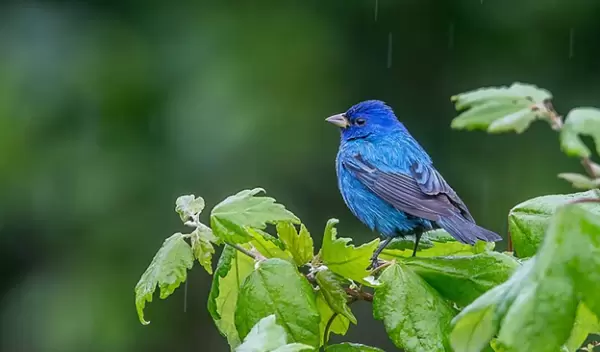
Bird diversity increased in severely burned forests of the southern Appalachians
A new U.S. National Science Foundation-supported study has found that bird diversity increased in North Carolina mountain forests severely burned by wildfire, reinforcing that while wildfire can pose risks to safety and property, it can be beneficial to wildlife. The study results could help forest managers better predict bird responses to wildfire and manage forests to benefit birds.
"It's important for us to understand the relationship between animals and wildfire dynamics as the climate changes because predictions show more of these high-severity wildfires across the landscape in the future," said study co-author Chris Moorman at North Carolina State University.
Wildfires burned more than 235 square miles of forest in the southern Appalachians in the fall of 2016, following a period of dry conditions and acts of arson. In the study published in the journal Forest Ecology and Management, researchers tracked different levels of burn severity in three forest regions of the Nantahala National Forest in western North Carolina.
"This study is a great example of how natural disturbances almost always benefit some species, which become increasingly rare without some sort of reset," said Doug Levey, a program director in NSF's Division of Environmental Biology. "The diversity of life thrives on the diversity of habitats caused by disturbances such as fire."
Researchers counted the abundance and diversity of birds during the breeding season in those forest regions across five years. They used that data to compare bird communities in patches burned to different degrees of severity.
"Birds and other animals are well known to respond to forest vegetation structure, which is the distribution of plants vertically in a forest," Moorman said. "When wildfire changes the vegetation structure, it has an impact on the animals that live there."
In severely burned areas, researchers documented loss of most of the canopy trees, followed by the regrowth of dense shrubs and the re-sprouting of trees. In areas impacted by high-severity fire, 44% of the trees died in the first year, and 71% had died by the fifth year. That compared to 7% tree mortality in unburned areas.
"After the high-severity wildfires, everything was brown and black and appeared dead," Moorman said. "But changes happen fast in the southeastern U.S., and vegetation grew back rapidly."
When the researchers compared the numbers of birds in areas of different fire severity, they found an increase over time in the number of birds, as well as greater bird diversity, in forest areas where wildfire severity was high. By the fifth year, the total abundance of birds and the species richness, or number of different species present, in areas of high-severity burns were twice as high as in unburned areas.
While it seems counterintuitive that high-severity patches supported more bird species, the scientists said that's because few species avoided the high-severity patches, but several species were more abundant or occurred only in those patches. More specifically, the indigo bunting, chestnut-sided warbler and eastern towhee — all species that breed in shrubs in areas with few or no canopy trees — occurred almost exclusively in the high-severity burn patches.


